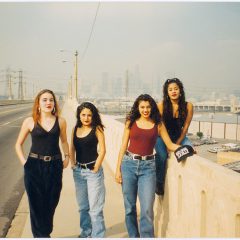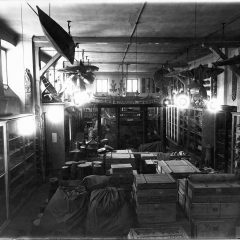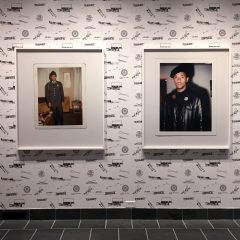Beautiful Human at Haverford College‘s Cantor Fitzgerald Gallery is a small show with big thoughts that burble and pop as the works by five artists hold a conversation with each other about identity and imagination. The show’s points of view zoom from imaginative self-identificaton to masks and costumes as tribal and cultural signifiers to the tyranny of the genetic code. And those are just the starting points.
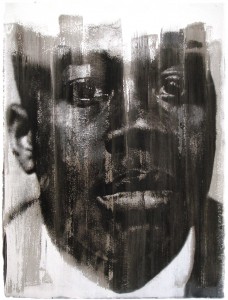
I don’t want to say much more about the ideas in there (so many more I can hardly believe it) because if you go, the show will reveal itself to you in ways you won’t expect. And you should go.
Here are some more reasons why:
Photographer Donald Camp’s elemental, giant portraits of African American men dominate the show. If you have never seen these one-offs printed with earth and casein, you owe it to yourself to see them now. These portraits tell a tale of self-invention and gravitas that overwhelms the popular culture’s focus on African American men as gangsters and gangstas. Camp is a former photographer for the Philadelphia Bulletin who manages to indict even the crappy newsprint and its quick and dirty printing methods in these masterpieces of material and social depth.
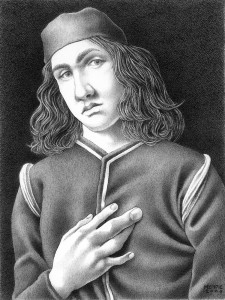
James G. Mundie’s small ink drawings of circus freaks–another group of outsiders reimagined, dignified, and preserved by portraits that borrow art historical compositions–stand up well, even next to Camp’s gorgeous ultra closeups. Mundie and Camp are both on a mission to reestablish into the mainstream the rejected, without tampering with the subjects’ self-images and their control of their own destiny.
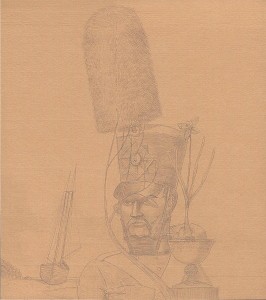
Two other drawing wizards–Matt Fisher and Rob Matthews–are still more reasons to see this exhibit. Fisher’s 18th Century soldiers are vulnerable and awkward, even when they cavort or daydream. The delicate drawings are everyman in costume, playing a role and yet not quite inhabiting the clothes, adult boys who are confused about how they could possibly be who they are and where they are–models of self-doubt as modern as they are antique. The deadpan drawings are delightful and quite like the soldiers–dreamy storybook figures that leap off the page into your heart.
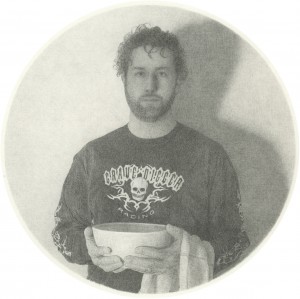
In contrast to Fisher’s figures who exist as universal soldiers of any time, Rob Matthews’ portraits are documents of this time–ordinary family and friends depicted with art historical allusions that preserve the subjects in the continuum of history, that place them in that collective memory that erases most mortals in a couple of generations. Matthews said he thinks of these as memorials, and therefore has written on the back the subjects names and particulars. The context of this show highlights all the thinking and complexity that has gone into this seemingly deadpan take on social circumstances that nearly consume individual identity.
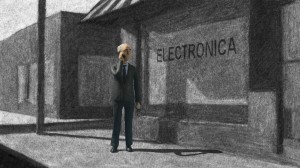
Out on his own moon, Joshua Mosley’s claymation cyber-video Commuter uses the cell phone as the opening metaphor for journeying beyond concrete physical circumstances to some place in the imagination or the mind. The mind’s world here is futuristic, an adventure down the wormhole of technology where physical and genetic facts seem almost beside the point! The journey is playful, defying nature, gravity, and other limits–and highlighting how technology is a magical mystery tour where we can escape who we really are where we really are.
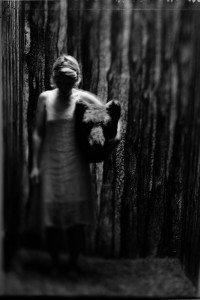
In the context of these complex works, Laura Graham’s large, introspective photos of women seem too large, their hints of psychological depth and mythic underpinnings not fully realized.
Beautiful Human, curated by Shelley Spector, is up to Oct. 9, 2009.Bea



